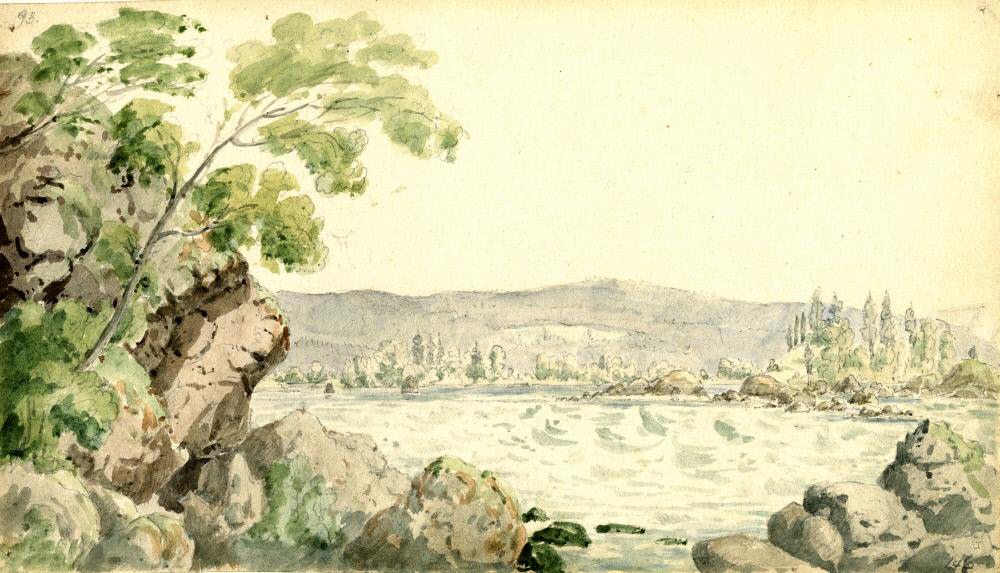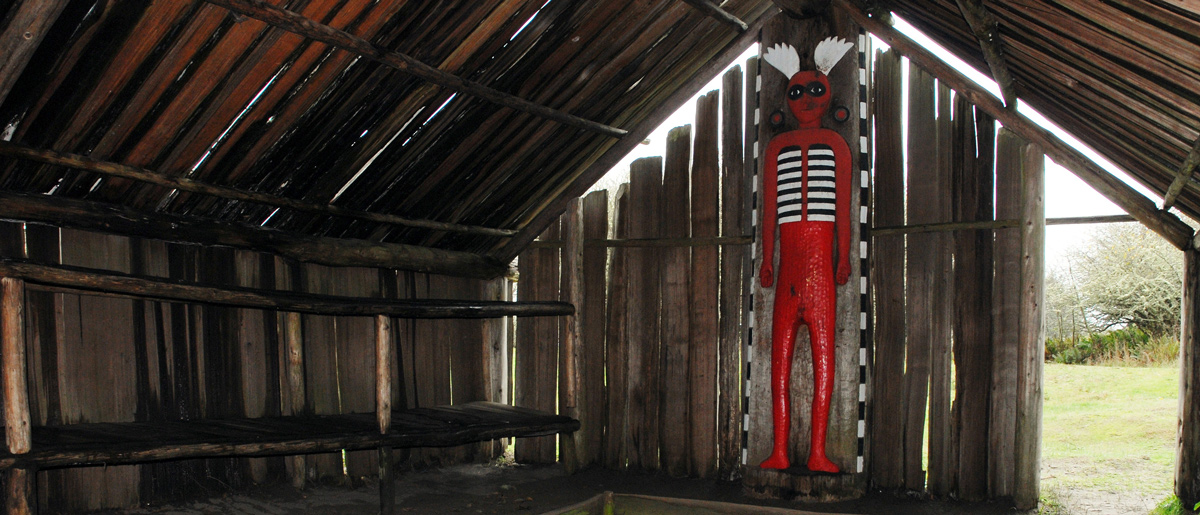Clark and Pvts. J. Field, Cruzatte, and Weiser scout the “Great Shute” at the Cascades of the Columbia. Cruzatte returns to the main party and two dugout canoes are carried around the rapids. Meanwhile, Clark continues down the river and sees wooden sculptures and a tall monolith—Beacon Rock.
Exploring Abandoned Houses
by Yellowstone Public Radio[1]Originally aired weekdays by Yellowstone Public Radio during the Bicentennial observance of 2003-2006. Narrated by Hal Hansen. Scripts by Whit Hansen and Ed Jacobson. Produced by Leni Holliman. © … Continue reading
The Cascades
by Paul Kane (1810–1871)
Watercolor and pencil on paper, 5 1/2 x 9 1/2 inches (14 x 24.1 cm). Courtesy Stark Museum of Art, bequest of H.J. Lutcher Stark, 1965, object no. 31.78.53, collections.starkculturalvenues.org/objects/39491/the-cascades?ctx=3221ccaa-9c83-465b-9817-ea332cceb53c&idx=95.
Portaging the “Great Shute”
We unloaded our canoes and took them past the rapids, some part of the way by water, and some over rocks 8 or 10 feet high. It was the most fatiguing business we have been engaged in for a long time, and we got but two over all day, the distance about a mile, and the fall of the water about 25 feet in that distance.
—Patrick Gass
Wooden Sculptures
great many wooden gods, or Images of men Cut in wood, Set up round the vaults . . . . I can not learn certainly if those people worship those woden emiges, they have them in conspicuous parts of their houses
—William Clark
Beacon Rock and Table Mountain from Hamilton Island
© 6 November 2015 by Kristopher K. Townsend. Permission to use granted under the Creative Commons Attribution-Share Alike 4.0 International license.
Above: This is the island that Clark explored on this day. Beacon Rock can just be seen in the distant middle. Table Mountain is at the right edge. The islands in this area have been modified by various projects related to nearby Bonneville Dam.
Strawberry (Hamilton) Island
I walked through this Island which I found to be verry rich land, and had every appearance of haveing been at Some distant period Cultivated. at this time it is Covered with grass intersperced with Strawberry vines. I observed Several places on this Island where the nativs had dug for roots
—William Clark
Beacon Rock
a remarkable high detached rock Stands in a bottom on the Stard Side near the lower point of this Island on the Stard. Side about 800 feet high and 400 paces around, we call the Beaten [Nicholas Biddle: Beacon] rock.
—William Clark
Weather Diary
Day of the month Wind State of the Weather 31st S W fair after rain Some rain last night and this morning.
—William Clark[2]Some abbreviations have been spelled out.
Experience the Lewis and Clark Trail
The Lewis and Clark Trail Experience—our sister site at lewisandclark.travel—connects the world to people and places on the Lewis and Clark Trail.
Plan a trip related to October 31, 1805:

Beacon Rock is a High Potential Historic Site along the Lewis and Clark National Historic Trail managed by the U.S. National Park Service. The site is managed by Washington State Parks.
Notes
| ↑1 | Originally aired weekdays by Yellowstone Public Radio during the Bicentennial observance of 2003-2006. Narrated by Hal Hansen. Scripts by Whit Hansen and Ed Jacobson. Produced by Leni Holliman. © 2003 by Yellowstone Public Radio. |
|---|---|
| ↑2 | Some abbreviations have been spelled out. |




